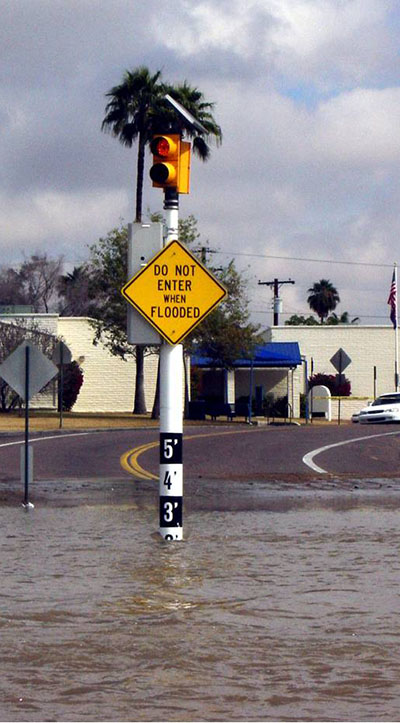In the western United States, most of our cities are situated in arid landscapes–dryland ecosystems or deserts. Historically, dry landscapes have been viewed as wastelands, lacking value until we created a use for them. Most humans now live in cities, and dryland ecosystems are currently home to over 2 billion people worldwide. Like any other organism, we humans modify our environment to facilitate our survival and meet our needs. And there is a tendency for us to think of cities as separate from “nature”. Dr. Nancy Grimm’s groundbreaking work examines the relationship of humans and other living creatures with their urban environments and looks at ways we might rethink the socio-cultural value of the water-limited landscapes we call home.
On Tuesday, February 25th, Dr. Nancy Grimm will present her talk “Rivers of our dreams: water futures in urban central Arizona” from 4 – 5 p.m. in room 210 of the Aline B. Skaggs Biology Building as part of the Global Change and Sustainability Center’s Seminar Series.
Dr. Grimm, an ecosystem ecologist and interdisciplinary sustainability scientist, is the Virginia M. Ullman Professor of Ecology in the School of Life Sciences, distinguished Sustainability Scientist in the Julie Ann Wrigley Global Institute of Sustainability, and Regents Professor at Arizona State University. Last year, she was elected to the National Academy of Sciences.
Grimm currently serves as the co-director of the Urban Resilience to Extremes Sustainability Research Network (URExSRN), working with cities to create collaborative visions for future urban infrastructure, building resilience and sustainability plans, and exploring nature-based solutions to urban resilience challenges. As the director of the Central Arizona-Phoenix Long Term Ecological Research (CAP LTER), an innovative interdisciplinary study of complex metropolitan regions, she helped develop conceptual models of social-ecological-technological systems, expanding how we think of ecology today.
Biodiversity makes ecosystems healthier and more resilient to destabilizing disturbances. Climate change is already bringing more potentially catastrophic disturbances like storms, floods, and droughts to our doorsteps. Couple this with the lack of biodiversity in cities, and one can see how, in thinking of our cities as separate from nature, we’ve made ourselves more vulnerable and less prepared to survive climate crises. Dr. Grimm’s research asks the question of how we might come together collectively to make plans and increase our ability to adapt to stability-rattling events.
A desert city like Phoenix, with 20 years of CAP-LTER data, can help researchers model systems around questions like how pollution might cycle through the water of the city and desert streams. Who might be impacted most in extreme events like floods or droughts? How will the city’s infrastructure hold up? How does stormwater impact water quality? Different ecosystems respond differently to the same disturbance, so not every city will approach, respond to, or withstand droughts or floods in the same way. But looking at ecosystem models that include cities is a way to start thinking of all the complex interworking parts of the system.
What does it look like for an urban environment to affect changes in an ecological system? How important is the factor of scale in shaping more sustainable cities? What sorts of tradeoffs might we expect in an effort to create a more sustainable future for ourselves?
Come explore these questions with Dr. Grimm on Tuesday afternoon, February 11, 2020. Her talk “Rivers of our dreams: water futures in urban Arizona,” will be from 4 – 5 p.m. in room 210 of the Aline B. Skaggs Biology Building. As usual, we’ll have some sweet treats, coffee, and tea, so bring your mug and enjoy.

